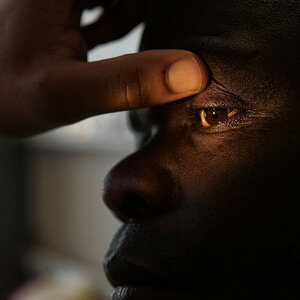Scripps Research Institute Receives $2 Million to Develop River Blindness Field Test
The Scripps Research Institute in La Jolla, California, has announced a gift of nearly $2 million from former TSRI board chair John Moores to fund development of a new field test for onchocerciasis, better known as river blindness, a parasitic disease that affects tens of millions of people in Africa, Latin America, and other regions of the world.
Moores is a longtime funder of research on worm-carried conditions and disease, having founded the Worm Institute of Research and Medicine at TSRI in 2005 and the River Blindness Foundation — which was later absorbed into the Carter Center — before that.
His latest gift follows the publication of breakthrough results from the laboratory of professor Kim D. Janda, director of WIRM, which identified a biomarker, detectable in patients' urine, that is secreted by the Onchocerca volvulus parasite during active infection. The parasite is transmitted to humans through the bite of river-dwelling blackflies in tropical and subtropical regions. The vast majority of cases occur in sub-Saharan Africa, though pockets of endemic infection exist in Yemen and Central and South America.
According to TSRI, current treatments for the disease are seldom effective immediately and often spare the adult worms, leaving patients with non-active infections. Current diagnostic methods include painful cutting of "skin snips" and an antibody test that can yield false positives due to non-active infections. Janda envisions an accurate and painless urine diagnostic test — similar to a home pregnancy test — which he hopes to develop over the next two years.
"For this to be of value in Third World countries, we need to morph this biomarker into something that's inexpensive, simple to use, tolerant of extreme temperatures, and portable — basically distilling our finding into a test that can be carted around in a backpack," he said. "This new gift will make that possible."





